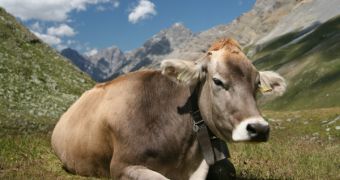A new long-term scientific study revealed that eating lots of high-protein foods, such as dairy products and meat, favors the development of denser and thicker bones in children who had on average at least 2 such servings per day during their early years, than in those who ate something else. The study was conducted between 1987 and 1999, making it one of the longest in this area of research.
The survey analyzed data collected from 106 children, gathered from the Framingham Children's Study. At the beginning of the investigation, all kids were between the ages of 3 and 5 years old, and they were medically observed until they reached 15 to 17 years of age, when several bone scans were conducted, so as to analyze the influence of high-protein foods on their systems.
The researchers, led by Lynn L. Moore, at the Boston University School of Medicine, learned that mild, yogurt and cheese were the most important triggers for a healthy bone growth process, followed closely by meat. An interesting find was the fact that the two types of products had a cumulative effect, meaning that, if kids ate both during childhood, they exhibited higher bone density and strength when they became teenagers.
"The findings of this study confirm the importance of a diet rich in dairy and other protein sources on adolescent bone mass," Moore says in the study, published in the November 2008 issue of Journal of Pediatrics.
The scans revealed higher mineral density in most bones in the body, but, most notably, in the ribs and the trunk, as well as in the bones of the pelvis, the arms and the legs. Conversely, children that ate less of such foods exhibited thinner bones, with a lower concentration of minerals and a significantly increased density, putting them at higher risk of easily breaking their bones, or developing osteoporosis when older.

 14 DAY TRIAL //
14 DAY TRIAL //